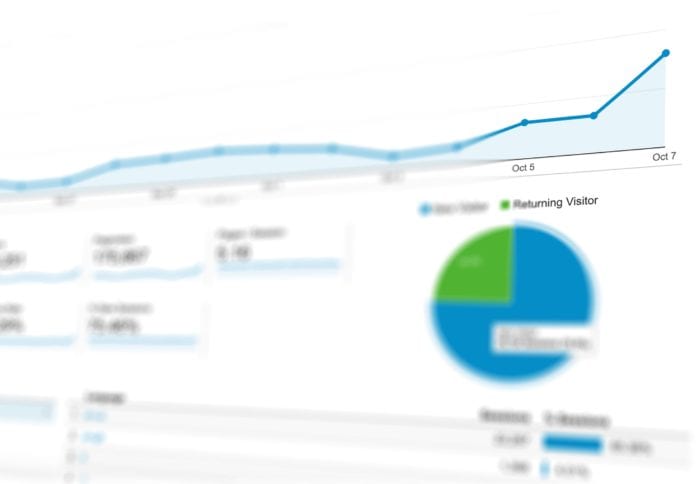Predictive Analytics is the future of marketing
Okay, so that title might be a tad misleading. Especially when you consider my knowledge of football is on a par with my knowledge of forensic mineralogy (a rock is a rock, right?). But I do know about predictions. The hyperbole about Predictive Analytics and its potential power to affect marketing has really ramped up in the last few months. Current industry commentary places Predictive Analytics, in terms of power and effectiveness on the far side of miracles, and in terms of its complexity, on a par with Stephen Hawking’s ‘A brief history of time’.
So, I agree with the general thrust of one of those.
The results. The results are phenomenal. They really are startling – to the extent that I’m looking at our client’s results and going back to our Head of Insight because there’s clearly a mis-type here (there isn’t). But if we take the potential success as a given, why are so few marketers investing in and committing to AI-Driven Predictive Analytics? Well speaking to my fellow marketers, the same phrases keep cropping up: ‘we can’t really implement the full set of predictive models yet, so we’ll hang on a bit’; ‘GDPR’s been a bit of a nightmare’; ‘I’m not sure we’ve got the data, it’s all over the place’; ‘it all seems really complex’.

But why complex? We predict all the time using the data available to us.
I predict my partner will want to watch the golf this weekend as opposed to visiting the cinema with me. How? Well, I’m looking at his previous tv preferences (past behaviour), the fact he’s been looking at the TV guide to see what’s on (current behaviour), and extra contextual information I hold (he’s a keen golfer himself).
So I can predict, with a high degree of certainty, his likely action this weekend. This is not the action I want. I want to go to the cinema. I want to see Oceans 8 (don’t judge). I want to change his likely action.
How? Well I need to market it to him with the right message. This is a message I can convincingly craft because I know his likely action. So I will wax lyrical about the film. I’ll remind him Sandra Bullock’s in it (don’t ask), maybe add an incentive like dinner beforehand and remind him that the last time he watched the US Open golf he fell asleep overnight on the sofa and got a crick in his neck.
I’ve predicted his likely action and then used my marketing skills to modify this to the result I want to see.
Now let’s visualise our marketing database and apply the same logic.
If we focus on an area of the customer journey where we’re struggling to realise the maximum potential, we can see how a predictive model can help. Let’s say I want to convert more single purchasers into multi-purchasers. After all multi-purchasers only account for 8% of the average customer database, but generate 40% of the value. This is an area we want to grow! Following on from my homelife analogy above, we’re going to analyse the following:
- Past behaviour
- Recent behaviour
- Any other useful factors (for example, is this a model where demographic, contextual or location data might play a part?)
What behaviours are we interested in? Well chatting to our Head of Insight there’s 100-150 fields that are considered in every model. Now thankfully these models are built in to our Marketing Automation technology, so no one is literally having to sift 100 plus fields. But anything that can make our predictions more accurate is given consideration. One of the other marketer concerns was that they didn’t have enough of the right kind of data. Quoting our Head of Insight again, you can start with what you have! Work out what you need to know more about and then work from there. She’s also written a great blog on when Predictive is a good idea – you can read it here.
Anyway, back to our mission to increase our multi-purchasers. Our model has combined past behaviours, current behaviours and any other useful information to form two groups. Likely to become a multi-purchaser and unlikely to become a multi-purchaser. Easy, right? This is the time to use your marketer super-hero skills and craft two messages to specifically target those two groups of customers. Obviously, the group who are likely to become multi-purchasers are a slightly easier proposition than those who aren’t. However, you’re not shooting in the dark here. You know they’re the difficult group, unlikely, at the moment, to shop with you again. So how do you get them back? You know your brand, you know what works, you know what messages have real impact – and now you know exactly who to send it to! Bingo!
So there we have it. The best models will echo the customer journey, following customer acquisition through to multi-purchase, VIP, unsubscribe and churn reduction. The idea is that your customers will move automatically through all of these models in time – leaving you to hone the messaging, strategy and add value in every way without faffing with the database.
Before I go I owe you one more prediction. And what are betting odds but another form of prediction looking at exactly what we’ve just discussed? A combination of past behaviour, current behaviour, and other relevant factors to predict a likely outcome!
Go for Brazil. Currently sitting at 4/1*. You’re welcome.
*Disclaimer – as of 1630 20/6/18 – don’t gamble your mortgage on it…
Thanks to Laura McHenry for sharing their advice and opinion in this post. Laura is Marketing Director at
RedEye. You can connect with her on
LinkedIn.







